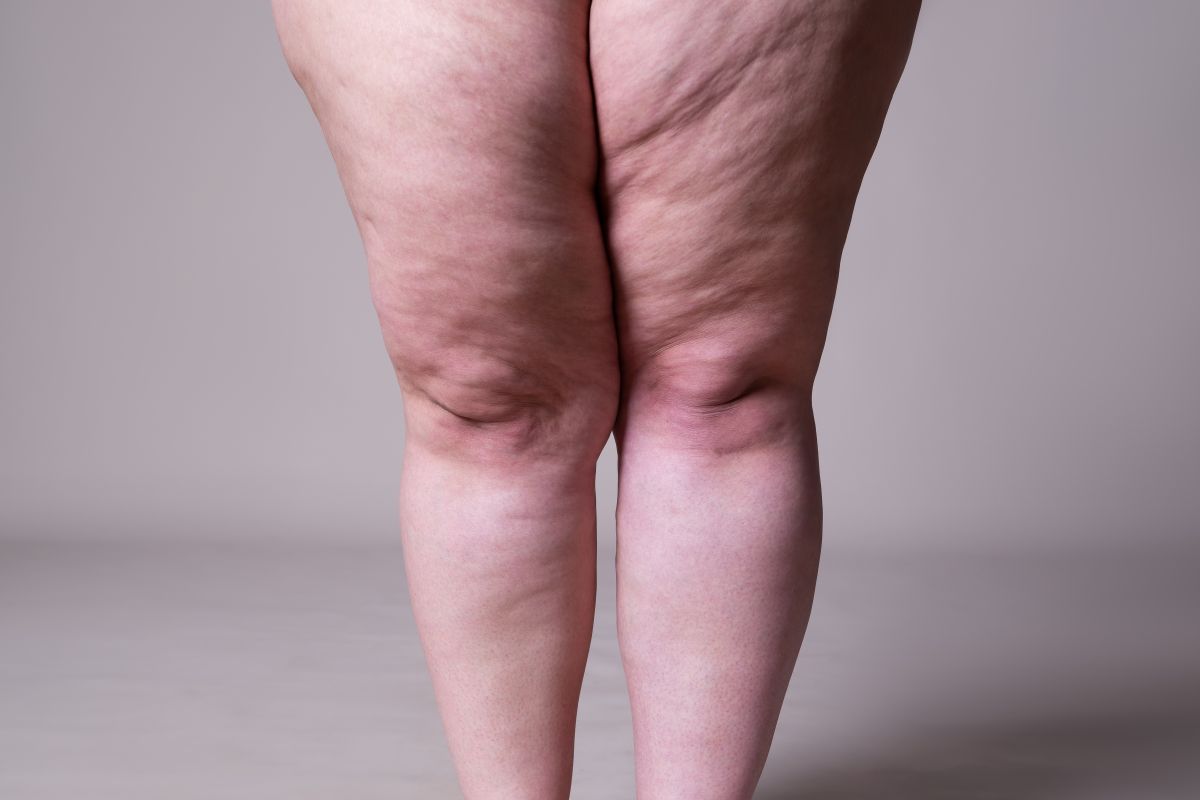Lipedema or lipoedema causes an uncontrolled accumulation of fat cells in the body. Finding a doctor who is familiar with this disease is an odyssey and, therefore, women who suffer from it (cases in men are extremely rare) are most often misdiagnosed.
This was the case of Claudia Effertz, who at the age of 30 developed lipedema in the first months of her pregnancy and although she visited many doctors, none recognized the disease. Most of the time she was advised to lose weight, eat less or exercise. In 2014, Effertz collapsed as a result of high blood pressure.
“I then went to a rehabilitation center. They had a lymphology department there,” she says. “Finally they made the correct diagnosis: Grade 3 lipedema in the arms and legs, which is the highest. It was the first time I heard about it.”
Effertz, now 53, received proper care there for the first time. She was treated with complex decongestive physical therapy, or CPD, which includes regular lymphatic drainage and compression of the arms and legs, as well as exercise in water. This therapy improves blood microcirculation and stimulates the body’s metabolism. This in turn causes the tissue, often hardened by lipedema, to soothe and pain to decrease. It took Effertz 15 years to get the correct diagnosis.
Tobias Hirsch from the specialist clinic Hornheide, who is also active in the German Lipoedema Society, says that what happened to Effertz is not uncommon. “In one study we examined when the first symptoms appeared in the patients. Most said it was during puberty. Then we looked at when they were diagnosed, and it was an average of 20 years later,” he explains.
Lipedema is a chronic disease
How to distinguish lipedema from obesity? In lipedema “it is important to emphasize that the accumulation of fat has nothing to do with obesity,” says Hirsch. The upper part of the body of women with this disease is almost always thin. Fat deposits appear on the upper and lower legs and on the arms. In the course of the disease, the limbs become increasingly thick and misshapen. In the worst cases, the pain is frequent and the patients can barely move.
“The classic triggers for the disease are puberty, the pill, pregnancy or menopause,” explains Hirsch. But hereditary factors also play a role.
About 70% of patients with lipedema also develop obesity throughout the disease. Their arms and legs become deformed and, as a consequence, the patients become sedentary. “Fewer calories are burned and people gain weight, whether they eat a little or a lot,” explains lipedema doctor Stefan Rapprich.
A widespread disease
Lipedema was first discussed in the 1940s and it has only been more scientific attention for about 15 years. Although there are still no epidemiological studies, it is estimated that some 370 million women worldwide suffer from the disease.
“In Germany, probably one in 10 women suffers from it. In general, Caucasian women in Europe are the most affected. In Asia, on the other hand, lipoedema is not known at all. There is a special way in African women: they tend to develop lipedema in the hip area”, explains Rapprich.
Currently, liposuction promises the greatest therapeutic success for this disease. Effertz has already undergone 4 such operations. He says that the first few days he felt severe pain, but it disappeared quickly.
Generally, liposuction is only performed at an advanced stage of lipedema. By then, however, many women have already developed other diseases, such as obesity or high blood pressure. Poor leg position often also causes orthopedic problems.
The LipLeg study will provide new data
The German LipLeg study is currently investigating the benefits that early surgery would bring to women. “The definitive data will probably be available in 2024,” says Hirsch. Digital help is also expected to be available soon. In an app called Lipocheck, there is an electronic questionnaire. With their smartphone, patients take two full-body photos. The app can use the body shape to determine if the woman has lipoedema and if she needs further clarification.
“The app is being tested in my practice and will be released to the public in February or March,” explains Rapprich.
It may interest you:
* “I’m not fat: I suffer from lipedema”
* “Eat less and move more” doesn’t always work for weight loss, new analysis finds
* Signs that indicate you should abandon the diet you are doing to lose weight
